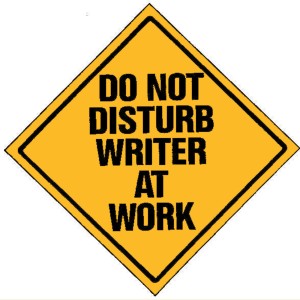The creative brief dates to the early 1960s when account planning was introduced to the advertising world by a Brit named Stanley Pollitt. This year marks the 50th anniversary of the creative brief. Its role in developing great advertising deserves recognition and, no disrespect intended, a review. All good things can be improved.
As both an admirer and advocate of the creative brief, I offer a small gift to this document’s long history: Some ideas to make the creative brief better.
1. Consumers make decisions about brands based on their feelings, not their brains. The Single-Minded Proposition must reflect this truth.
This is an insight that is not new, but is slow to be embraced. Some account planners and academics have been writing about this topic, and I have written about it without being fully aware of the research. Professional experience, however, is hard to ignore.
Too often, we accept single-minded propositions that focus on rationality, on a mistaken belief that people make decisions based on facts and evidence, that we act reasonably. The process humans follow to arrive at a buying decision is sloppy, filled with irrational thinking, often contrary to our own best interests. Branding would not exist as we recognize it today if it were not because of this odd path we take before we open our wallets.
We must, therefore, change the way we view the core of the creative brief—the single-minded proposition. Some argue that the “single” nature of this idea is a relic, and there may be some truth in that, but I believe the most important argument here is the missing, or under-representation of, emotion. 
It’s a scary thing to place so much weight on a hard-to-measure part of human psychology. The good news is, measuring emotional responses is actually getting easier, and more social scientists are exploring it, with fascinating results.
Advertising driven by direct appeals to emotion also works better. It is often more engaging, more humorous and more memorable. Refer to the link above for evidence and its nearly five pages of references.
The single-minded proposition is dead, as I suggested in a recent post. It must be replaced by an updated single-minded proposition that embraces the human nature of decision making: The messy, dynamic, more trustworthy emotions that make us who we are.
Just ask any creative. She knows from experience.
2. Creative brief writers must become better writers.
We must all become better writers, but this is especially true for communications professionals.
Please don’t mistake this as a plea for better headline writers. Anyone can write a headline. For proof, visit a parking lot and see how many clever personal license tags you can find. 
Good, clear writing is a direct result of good, clear thinking. The creative brief is the first step in the creative process. It is the first ad written for any new communications project. It is the inspiration for the creative team. It must carry this weight with grace.
A poorly written creative brief is uninspiring for one reason and one reason only: Lack of clarity.
Contrary to conventional wisdom, lack of clarity is not, repeat not, because the brief fails to offer “outside the box” thinking, a term that has become meaningless; worse, it is simply dumb and wrong.
Lack of clarity means incoherent, unintelligible, not particular. It means fuzzy, blurred, unsharp. Good writing makes ideas coherent, intelligible, particular. Good brief writing makes coherent ideas sizzle.
Creative brief writers must be dedicated practitioners of the art of clear writing, first and foremost.
3. Collaborate, collaborate, collaborate.
Less is more does not work in this space. Creative teams are called teams for a reason. Isn’t it about time we initiate creative brief teams?
If you have a stake in the outcome, you vest yourself. It’s time for creatives to take an equity stake in the document they love to loathe.
4. Re-new your vows to the creative brief.
I came across a blog post from a thoughtful account planner who suggested that the creative brief had outlived its usefulness and that in its place, clients, agencies and creatives should substitute a freer, uninhibited approach to producing creative solutions: A kind of “divergent thinking meets convergent thinking” informal brainstorming session.
I found myself shaking my head for the nth time. Someone is always trashing the document when the problem, in fact, is the content and the content’s originators.
No matter who complains about the creative brief, the complaint is rarely different: It doesn’t inspire enough. It doesn’t propel good thinking enough. It doesn’t work hard enough. It doesn’t do something quite enough.
To my thinking, this misses the point. The document is simply a place holder. It is ultimately only as good as the answers its questions provoke. Asking better questions might help, but that is the easy part. Producing better answers is my response, and it is definitely the hardest part.
Don’t blame a poorly imagined story on the document in which it resides. Look at yourself, the story teller.
 Renew your vows to this instrument of inspiration. Believe it can perform alchemy and it will. It is a blank space awaiting…
Renew your vows to this instrument of inspiration. Believe it can perform alchemy and it will. It is a blank space awaiting…

